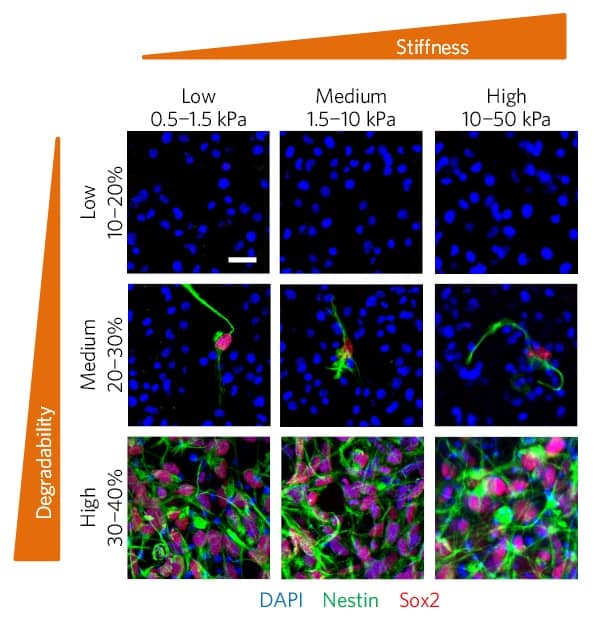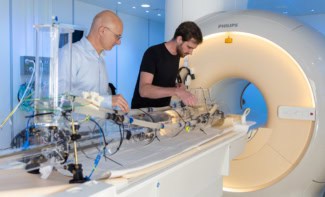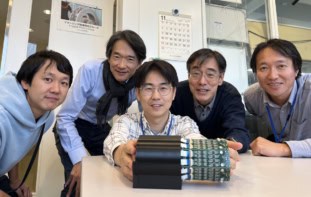
Stem cells are revolutionizing medical research. The ability of stem cells to be grown into different cell types and grow freely is extremely useful from a tissue modelling standpoint, as well as for transplantation. Neural stem cells – or neural progenitor cells (NPCs) – have the capacity to differentiate into brain cells, presenting an attractive option for replacing damaged tissues within the brain.
A common issue for NPCs is the expansion of cell numbers – to an amount that’s effective for cell therapies – whilst keeping inherent stem cell properties to grow and to be induced into multiple cell types (stemness). This problem is being addressed by researchers from Stanford University, who have established 3D hydrogel culture parameters that allow for mass expansion of cell numbers whilst maintaining the stemness of the NPCs (Nature Materials 16 1233).
Cell-mediated remodelling
Hydrogels are biomaterials based on water-rich polymer networks that can house cells in a 3D environment, replicating aspects of the extracellular matrix that surrounds cells in vivo. Hydrogels present useful properties for the growth of cells in a physiologically relevant environment, as well as providing a large surface area when compared with planar plastic substrates. This makes hydrogels an ideal candidate for the upscaling of cells, with cells being seeded within a 3D volume rather than on a 2D surface.
The research group recognised that NPCs (extracted from mice) do not require an environment with similar stiffness to the brain (0.1–1.1 kPa), but instead rely upon cell-mediated degradation and remodelling of their surrounding environment to grow and expand cell numbers. By altering the degradability of hydrogel used – between low (10–20%), medium (20–30%) and high (30–40%) – they established that both stemness and growth are directly correlated to increasing hydrogel degradability. As NPCs are not affected by tensile forces from their surrounding environments, the increasing stiffness of hydrogel (0.5–50 kPa) did not affect the expansion or stemness of the cells.

Peptide domains
The researchers tested three different hydrogels, all of which allow cells to remodel their surrounding environment. The main hydrogel used for the study was an elastin-like polypeptide hydrogel. This hydrogel is a biopolymer with an elastin-like domain and a peptide sequence domain (arginine-glycine-aspartic acid RGD) that allows for cell attachment and cell-mediated hydrogel degradation.
Through altering the concentration of crosslinks within the hydrogel, the researchers could modulate the amount of cell-mediated remodelling allowed by the hydrogel; with fewer crosslinks making the hydrogel more degradable by cells.
“Brain in a dish”
Aside from the stem cell-based therapeutic application of NPCs and differentiated NPCs, these cells are also commonly used for medical and biological lab-based research. The discovery of the ability to “reset” adult cells (fibroblasts) taken from a skin biopsy back to a pluripotent stem cell (iPSC) has opened further avenues of research. The iPSC can be differentiated into an NPC, which can then be grown into different cell types of the brain to make a “brain in a dish”. This allows for the growth of a human cell model of the brain, grown from one person; with the potential to revolutionize personalized medicine.



